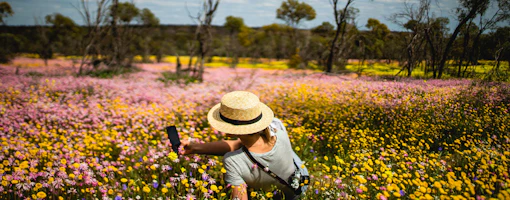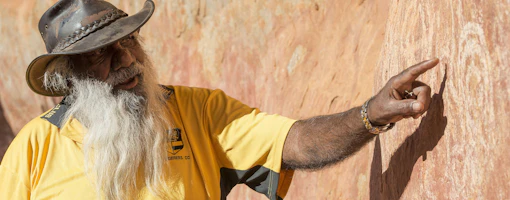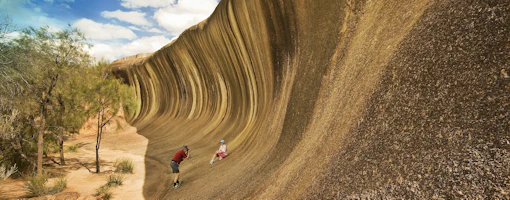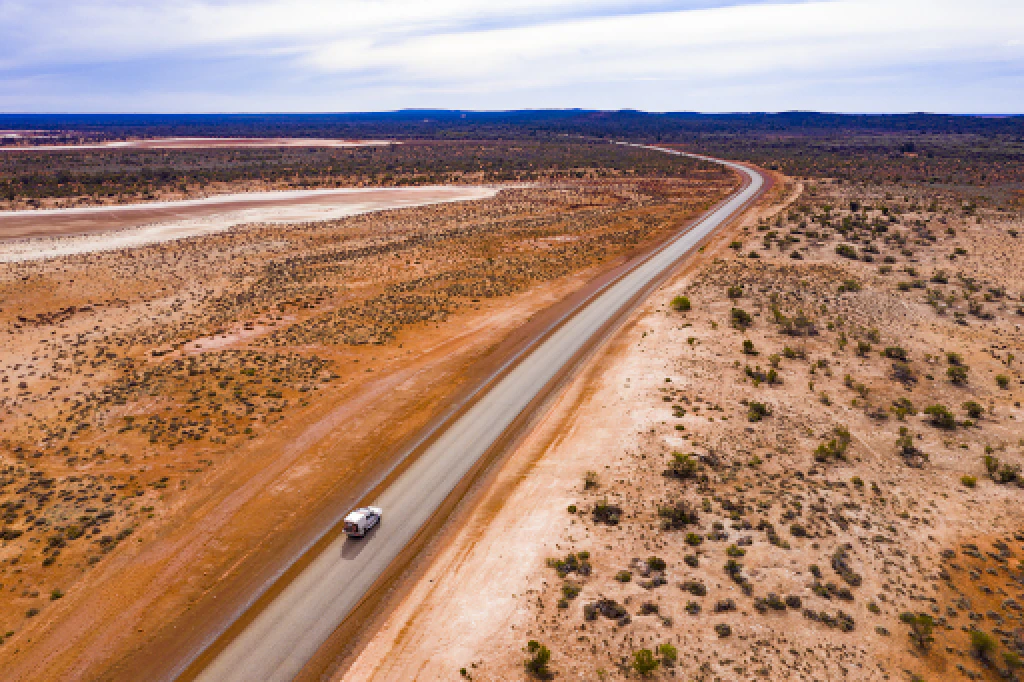
Discover true wild in the Gascoyne Murchison
Take a detour and discover true wild in the Gascoyne Murchison
If there’s one thing the Gascoyne Murchison has plenty of, it’s wild! Wild spaces, wild nature, and wild landscapes. So take the road less travelled and explore vast plains of rich, red earth, towering ancient rock formations, magnificent gorges, unique flora and fauna and clear, starry night skies. Here’s just a taste of what’s out there, but the best way to do it is to take a road trip and get out there! You’ll be so glad you did - the memories of a deTour like this will last a lifetime.
Explore the beautiful gorges and red rock landscape of Kennedy Range National Park, and further east, the magnificent Mount Augustus - the world’s largest rock, known to the Wadjari people as Burringurrah. Get lost in infinite night skies, and wake to sunrises that will take your breath away. Be awe-struck at the towering hulk of Mount Augustus, the world’s largest rock, and marvel at the wildlife in their natural habitat, from unique reptiles to tiny marsupials, emus, kangaroos and dingoes.

The Gascoyne Murchison is also famous for its profusion of birds. Hundreds of species live and breed in the area, including the wedge-tailed eagles that soar through expanses of blue sky high above the mulga shrub, and tiny zebra finches that flock in clouds of colour. At dawn and dusk, the bush comes alive with the chitter-chatter of budgerigars, tiny finches and lorikeets, and the raucous calls of parrots and pink-and-grey galahs. Emus are also common in the region, so keep an eye out.
The region is also famous for some of the oldest rock formations in the world, at over 2.7 billion years old. These enormous boulders and ranges have dominated the landscape since the beginning of time, and many of them are the subject of fascinating Indigenous Dreamtime stories. They also provide the perfect vantage point for experiencing the spectacle of a real Australian outback sunset.
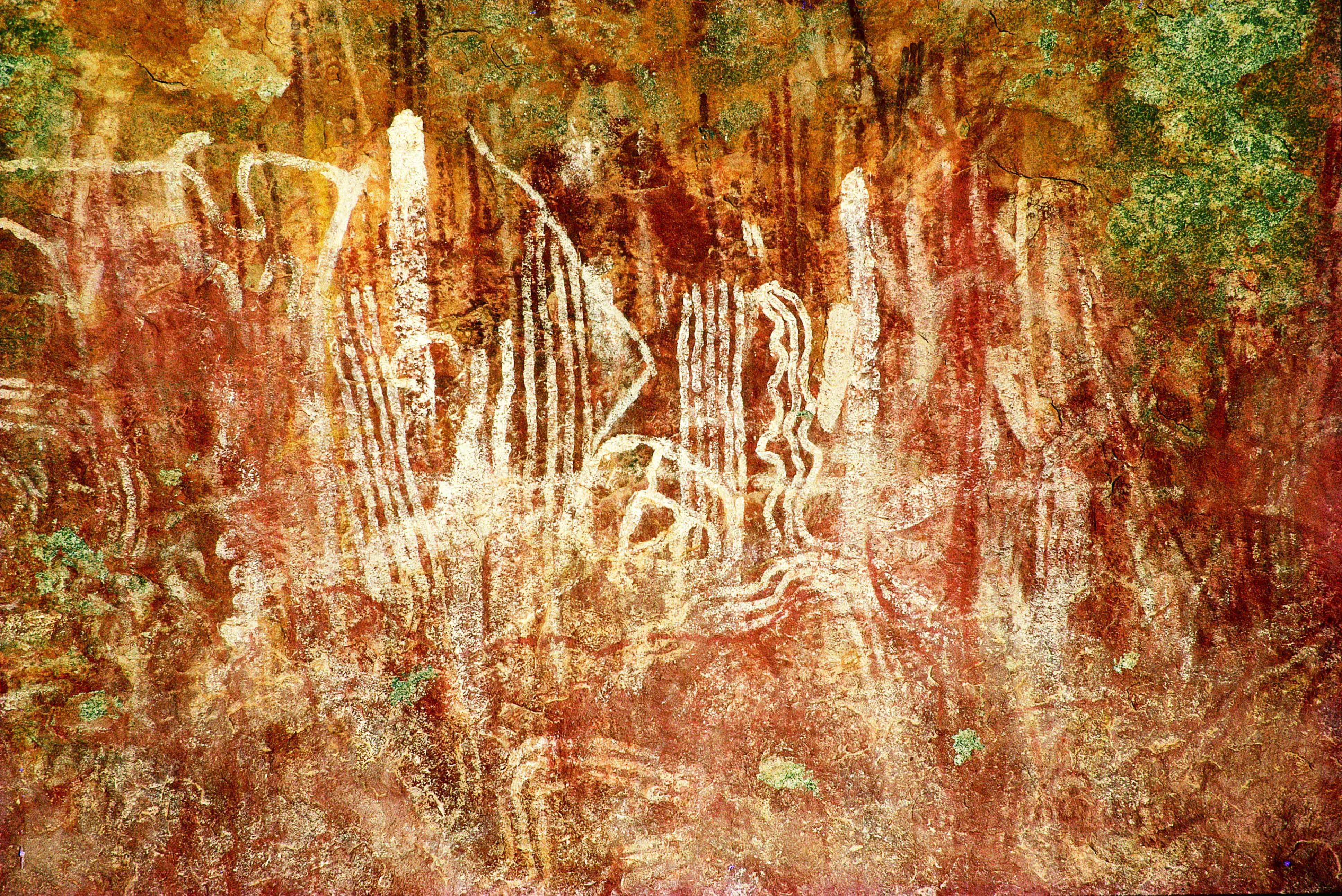
Take a detour to Sandstone, 160km east of Mount Magnet on the road to Leinster, and explore the area’s stunning natural attractions there. During wildflower season (July to September) the landscape is transformed from rich red earth to a carpet of colours. The Sandstone area has countless natural rock formations or 'breakaways' which contrast dramatically with the rust-stained landscapes. For over one hundred years, the ancient rock formation known as London Bridge has been a popular lookout and picnic spot. London Bridge is believed to be over 350 million years old – some estimates put it at up to 2 billion years old, almost half the age of the planet. Once wide enough to allow a horse and sulky to cross, it has eroded over the years to its present width of one metre.
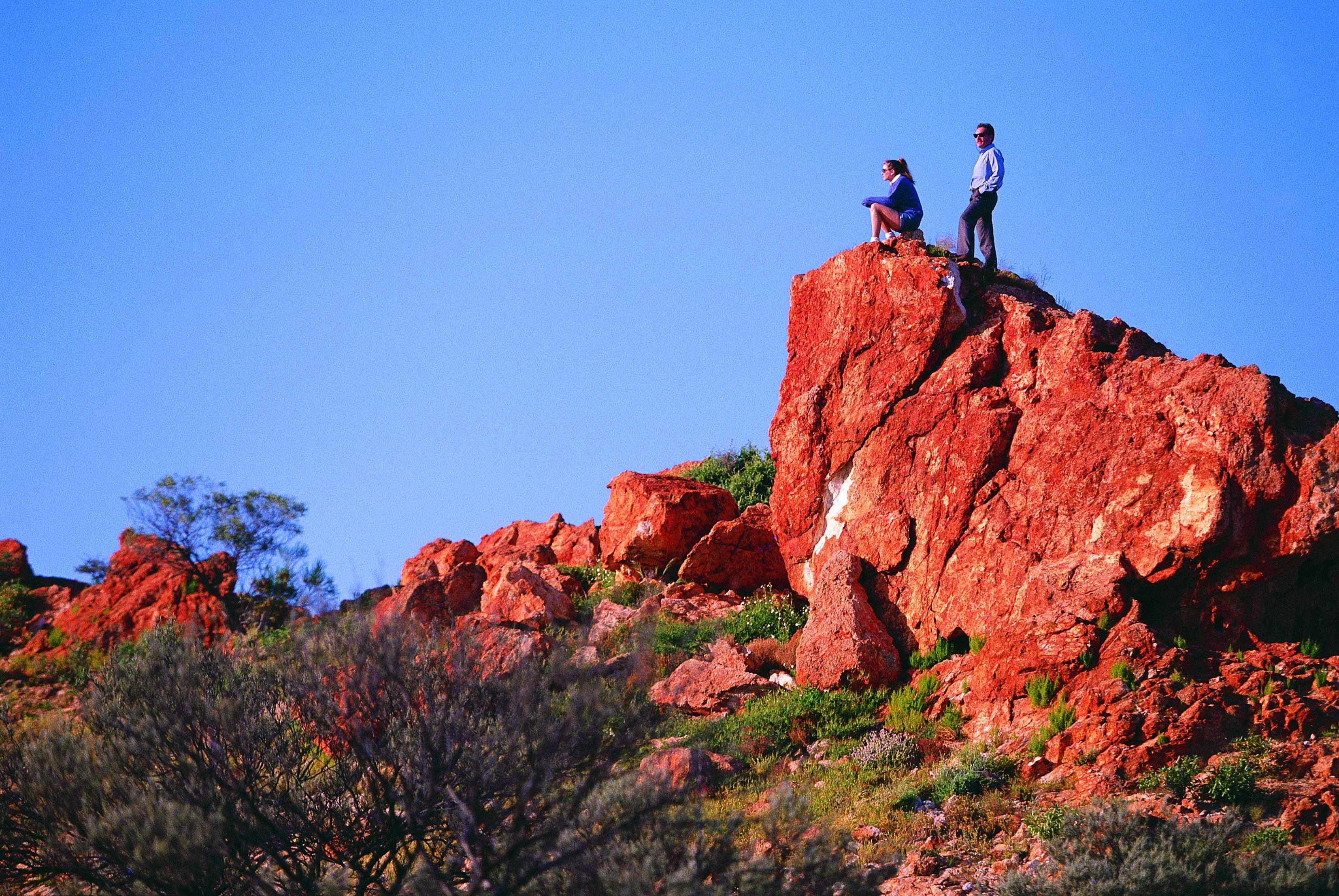
At the end of the day, remember to look up and take in the wild, endless infinity of the night sky. The stars shine brighter in the Gascoyne Murchison, so take a star gazing guide with you on your road trip and take advantage of the clearest, starriest nights you’ll ever see.
Whichever way you look at it, you’ll have an unforgettable time in the wide, wild spaces of the Gascoyne Murchison!





